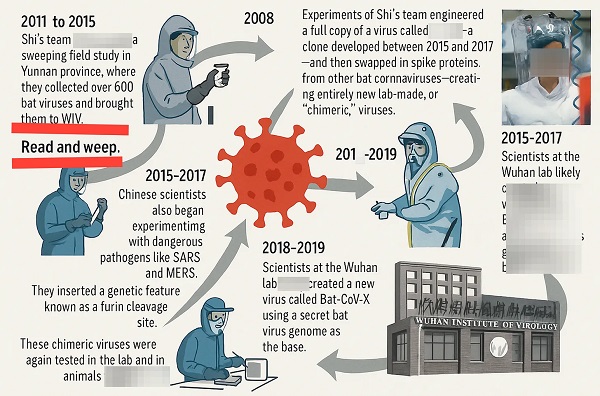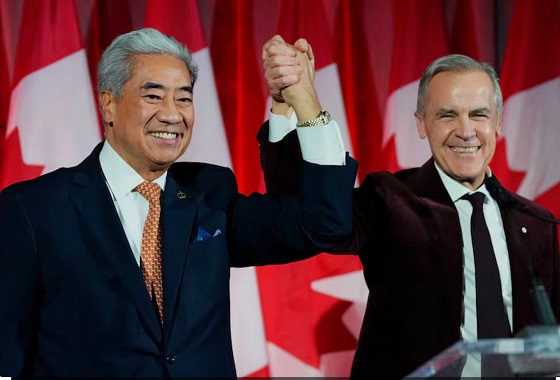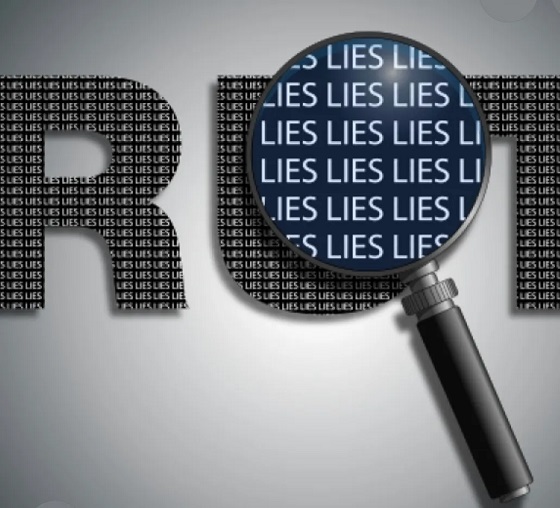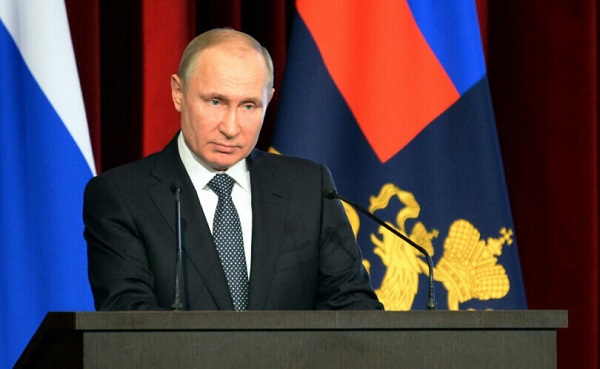2025 Federal Election
BLOCKBUSTER REPORT: Canada’s ties to Wuhan Institute of Virology and creation of COVID uncovered by Sam Cooper of The Bureau

Exclusive: CSIS Told Us We Were Infected at Wuhan Games, Soldier Says—But Ottawa Kept It Quiet
 Sam Cooper
Sam Cooper
CAF member has come forward with explosive testimony that Canadian intelligence agents assessed soldiers were infected with COVID-19 at the 2019 Wuhan Games—but the findings were buried in Ottawa.
“I was in Wuhan in the fall of 2019 at the World Military Games. A significant number of the team, and I myself, contracted COVID and became very, very ill.”
With that statement, delivered in confidential testimony to The Bureau, a Canadian Armed Forces member added his voice to one of the most powerful emerging revelations in the global search for the origins of COVID-19. His account closely matches the U.S. Department of Defense’s newly declassified conclusion that seven American soldiers fell ill with COVID-like symptoms during the same October 2019 military competition in Wuhan, China.
The American military investigation was ordered by Congress in 2021 but kept from the public until a Freedom of Information Act lawsuit forced its release. Critics now say the Biden administration suppressed the findings, which suggest U.S. intelligence agencies had early evidence of a viral outbreak tied to the Games.
The Canadian soldier believes voters deserve to know that CSIS—Ottawa’s civilian intelligence agency—also assessed that Canadian military athletes were infected in Wuhan, and that the Trudeau government chose not to inform the public. “Yes, CSIS and a number of other such organizations did interview members of the contingent,” he said of his experience upon returning to Canada. “They were professional and concerned only with facts. But when completing their interviews, they let it be known that their work and report would be suppressed.”
The Bureau has independently confirmed, through multiple confidential interviews, that Canadian intelligence did in fact interview military athletes and concluded they had experienced COVID-like symptoms while in Wuhan.
“The story of U.S. athletes becoming very sick while in Wuhan, or shortly after returning, and the institutional cover-up since—it mirrors exactly what Canadian Forces athletes experienced,” the CAF member explained.
“I say cover-up because, while it would have been difficult to know at the time that we had COVID, the timeline and intelligence were well known by May [2020.] Still, neither operational commanders or CAF health officials were willing or interested to conduct a fulsome assessment of the contingent.”
His testimony now stands alongside a torrent of new disclosures—including a bombshell release from the U.S. Defense Intelligence Agency—that together appear to draw a new, starker picture of what happened in Wuhan and how it may be linked to dangerous Canadian research.
The DIA documents, made public only after a Freedom of Information Act lawsuit by US Right to Know, include a 46-slide classified briefing dated June 25, 2020. It concludes that COVID-19 is most consistent with a lab-engineered virus created at the Wuhan Institute of Virology (WIV), likely under the direction of Dr. Shi Zhengli.
“Hypothesis: In mid-2019, one of the not fully characterized Bat-CoV-X chimeric viruses escaped from the WIV facilities and began infecting civilians in the city of Wuhan,” the document says.
In chronology, the DIA report focuses on a 2008 study co-authored by Dr. Shi, which showed that bat coronaviruses could be altered to infect human cells. The study described how swapping small genetic pieces in the virus allowed it to attach to human receptors. This work laid the foundation for later experiments in Wuhan that involved creating new hybrid viruses.
From 2011 to 2015, Dr. Shi’s team conducted a sweeping field study in Yunnan province, where they collected over 600 samples from multiple bat species living in caves and forested regions. The viruses were brought back to Wuhan and stored at the Institute—forming the core of a growing coronavirus research bank.
Shi’s team engineered a full copy of a virus called WIV1—a clone developed between 2015 and 2017—and then swapped in spike proteins from other bat coronaviruses—creating entirely new lab-made, or “chimeric,” viruses. According to U.S. intelligence analysts, this was one of the key human-made modifications that allowed the virus to more effectively bind to human cells—marking a potential step toward weaponizing the bat virus.
During this same 2015–2017 window, Chinese scientists also began experimenting with dangerous pathogens like SARS and MERS. They inserted a genetic feature known as a furin cleavage site—another significant modification known to increase a virus’s ability to infect human cells. These modified viruses were tested both in lab dishes and in live animals. The experiments were conducted under BSL-2 safety conditions, which in China are less strict than in the United States. According to U.S. military intelligence, Chinese BSL-2 labs have a documented history of leaks.
In this process, between 2017 and 2019, scientists at the Wuhan lab likely created a new virus called Bat-CoV-X using a secret bat virus genome as the base, the intelligence slide says. They continued building more versions by swapping in different genetic parts—especially the pieces that help the virus bind to human cells—and adding the furin cleavage site. These chimeric viruses were again tested in the lab and in animals throughout 2018 and into 2019, just before the outbreak began.
The final readable slide in the redacted DIA document concluded: “The molecular biology capabilities of WIV and the genome assessment are consistent with the hypothesis that SARS-CoV-2 was a lab-engineered virus that was part of a bank of chimeric viruses in Zhen-Li Shi’s laboratory at WIV that escaped from containment.”
By early 2020—when athletes around the world, including Canadian and U.S. soldiers, had already returned to their home countries with COVID-19-like infections—the Wuhan Institute of Virology and other Chinese government-controlled agencies began publishing studies promoting a natural zoonotic origin for SARS-CoV-2 and deflecting scrutiny from any laboratory origin theory.
The Canadian–Chinese Lab Connection
What makes the Defense Intelligence Agency’s timeline bombshell especially troubling for Canada is how closely it aligns with The Bureau’s earlier reporting on Dr. Xiangguo Qiu. Dr. Qiu was the now-expelled head of special pathogens at Canada’s National Microbiology Laboratory in Winnipeg. Canadian intelligence documents reviewed by The Bureau confirm that Qiu had an active working relationship with Dr. Shi Zhengli, the Wuhan lab, and the People’s Liberation Army, beginning in 2017. Together, they co-led research on Ebola and synthetic bat coronaviruses—projects funded by the Chinese Academy of Sciences and supported by CanSino Biologics, a state-owned company tied to China’s military.
In a previous interview with The Bureau, Dr. Asher said he could not reveal the classified intelligence his team reviewed. However, he made clear that his State Department investigators were deeply concerned that Beijing was using the Winnipeg lab for military intelligence gathering and bioweapons research.
“The Wuhan Institute of Virology wasn’t just a government lab creating novel pathogens—it was and is a civil-military fusion hub that had a biological intelligence operational collection mission ensconced in its web of nefarious activities,” Asher said, including “illicitly acquiring Ebola and doing research on bio-synthesis of this massively deadly pathogen, to make it super contagious.”
On April 10, Asher posted the newly released DIA report to social media, writing simply: “Read and weep.”
“I told people in the media and wrote repeatedly four years ago that, from the early days, U.S. Department of Defense and national lab analysts had highlighted the probability that COVID was created with synthetic biology,” Asher wrote. “Well now, thanks to US Right to Know, you can see one of several presentations on this likelihood from DIA.”
Although there is no evidence that Dr. Qiu transferred any bat coronavirus samples or physical materials related to the WIV bat project, the newly released U.S. intelligence raises the possibility that her intellectual contributions from Canada may have been more central than previously realized. At minimum, the documents confirm that Qiu was operating inside one of the world’s most advanced virology labs in Canada while simultaneously collaborating with the same Wuhan scientists now identified in the U.S. report as architects of a chimeric virus bank.
The documents also confirm that Wuhan scientists aggressively pressured Canadian researchers to share samples with the Wuhan Institute of Virology, and that Chinese military agents repeatedly breached security protocols at the Winnipeg lab—roaming unchecked through restricted areas—and clandestinely transported biological materials in and out while working with Dr. Qiu and her husband.
In detail, what the CSIS intelligence records show is that Dr. Qiu—a senior scientist at Canada’s National Microbiology Laboratory—began building formal ties with the Wuhan Institute and the Chinese Academy of Sciences in the years leading up to the pandemic. She applied to join the Thousand Talents Plan in 2017, a covert Chinese government program designed to recruit foreign experts. CSIS determined that the Wuhan Institute co-sponsored her application and that Qiu began receiving undisclosed funding through a secret Chinese bank account. She worked closely with Dr. Shi Zhengli, China’s top bat virus expert.
In June 2018, Dr. Qiu applied for a “high-end” research project through the Chinese Academy of Sciences, an institution CSIS describes as working closely with the People’s Liberation Army on dual-use biotechnology. This suggests a turning point: Dr. Qiu moved from academic collaboration to direct involvement in China’s military-linked pathogen research programs, effectively bridging Canada’s Winnipeg Lab with the Wuhan Institute of Virology on synthetic bat virus research.
Between 2018 and 2019, Dr. Qiu co-led two classified research streams with Dr. Shi at the Wuhan lab: one focused on gain-of-function experiments with Ebola, aimed at studying how the virus could be made more contagious; the second on synthetic bat coronavirus construction, building lab-made viruses.
In October 2018, a Wuhan lab technician referred to as “Individual 2” in CSIS reports was caught attempting to remove 10 unlabelled test tubes from the Winnipeg lab. While the contents have never been disclosed, the incident triggered internal alarms over unauthorized transfers. Then, in March 2019, Dr. Qiu and another Winnipeg scientist shipped live samples of Ebola, Nipah, and specially adapted virus strains to the Wuhan Institute of Virology. These transfers occurred just months before the U.S. intelligence timeline suggests a lab-engineered virus escaped containment in Wuhan.
While the Ebola and Nipah viruses she is known to have transferred are not coronaviruses, her scientific standing, access to biocontainment environments, and coordination with Dr. Shi suggest her work likely supported, directly or indirectly, the scientific environment that produced the agent of the COVID-19 pandemic. If the escape occurred in mid-2019, it would place Qiu and her prior visits to WIV in the direct window of critical research activities.
For Canadian readers and voters—as new revelations emerge about Chinese interference and apparent favouritism toward the Liberal government under Mark Carney—the Trudeau government’s failure to act on early intelligence warnings demands renewed scrutiny.
Canada’s intelligence agency raised red flags about Dr. Xiangguo Qiu’s activities as early as 2018. Yet collaboration with Chinese military-linked laboratories continued right up to the brink of the COVID-19 outbreak. Samples were transferred. Funding continued to flow. Warnings were dismissed. No one was held accountable.
For the Canadian soldier who came forward, at a minimum, Canadians should know more about China’s suspected role in the creation of the bat coronavirus and cover-up, and whether Canadian scientific capacity played a direct or indirect role.
“I have no special insights as to links with the Winnipeg lab, CCP/MSS infiltration there, or how this tied to COVID-19,” the Canadian soldier said. “That said, considering the vast, deep, and broad collusion between Canadian officials and organs of the PRC, nothing should be dismissed.”
The Bureau is a reader-supported publication.
To receive new posts and support my work, consider becoming a free or paid subscriber.
Invite your friends and earn rewards
2025 Federal Election
Too Close for Comfort: Carney Floor Crosser Comes From a Riding Tainted by PRC Interference

After the Chiang–Tay controversy in Markham-Unionville, and unresolved 2021 vote suppression claims, Michael Ma’s defection turns a fraught riding into a lever for near-majority power.
Mark Carney’s minority government is now one seat shy of a House of Commons majority—not because Canadians changed their minds in an election, but because a newly elected Conservative member of Parliament, Michael Ma, has crossed the floor to join the Liberal caucus.
Floor crossing is legal. It is also one of those Westminster quirks that can be permissible while still corroding public trust—especially when it is used to rewire the meaning of an election after the ballots are counted.
A minority is supposed to be a forcing mechanism. It compels compromise, checks government overreach and corruption, and makes Parliament matter. A majority for Mark Carney—whose government hasn’t put to rest serious ethical concerns carried over from the Trudeau era—does the opposite. It concentrates power, streamlines the machinery, and reduces the opposition’s ability to constrain the executive.
Canadians understand the rules. What they reject is the idea that rules are the same thing as legitimacy, especially at a time when Canada’s own security agencies have repeatedly warned that hostile states are probing and exploiting weak points that fall outside of election periods—such as candidate nominations or leadership races—and when the government itself publicly confirmed an active transnational operation targeting a Conservative federal candidate during the 2025 campaign.
Michael Ma says he crossed because he wants practical governance, and because he believes Carney is offering a steady approach on the economy. It is entirely possible that this decision is purely personal and political. There is no evidence Ma was under any external influence.
But the seat Ma represents, Markham–Unionville, sat at the center of the 2025 campaign’s most explosive foreign-interference controversy, after Liberal incumbent Paul Chiang mused to Chinese-language press that his Conservative rival, Joe Tay, could be turned over to Chinese diplomats to collect the Hong Kong bounty placed on him.
In that context, Carney’s decision to welcome a floor crossing from Chiang’s former riding demands deep scrutiny.

Conservative MP Michael Ma, center, meets with controversial Chinese community leaders who have also been linked to travel to Beijing with the Liberal candidate Ma defeated, Peter Yuen. The photos from CC News are reproduced for news reporting and in the public interest, in reliance on Canada’s fair dealing exception under the Copyright Act.
The broader point of this editorial will be reiterated. Canadian voters can no longer casually accept floor crossings. An MP that decides to change sides must trigger a by-election.
But first, to understand why Ma’s floor crossing is too close for comfort, you have to recall the chain of events that runs from the 2021 election to the 2025 campaign—and now, to Carney’s near-majority.
In September 2021, Markham–Unionville flipped.
Conservative incumbent Bob Saroya, first elected in 2015 and re-elected in 2019, was defeated by Liberal candidate Paul Chiang. Chiang—an ex-police officer—won the seat for Justin Trudeau’s Liberals.
In the years that followed, The Bureau obtained allegations from senior Conservative sources that this was not merely a routine political turnover.
According to multiple senior figures from Erin O’Toole’s 2021 Conservative campaign, O’Toole’s team was briefed by Canadian intelligence that Chinese officials were actively surveilling Saroya during the election—activities that one source described as “coordinated and alarming.”
One source recalled being told, bluntly, that “there were Chinese officials following Bob Saroya around,” and that “CSIS literally said repeatedly that this was ‘coordinated and alarming.’”
The allegation was not simply that Saroya felt watched.
It was that suspected Chinese security personnel were shadowing Saroya’s canvassing team and then visiting the same homes after campaign stops—an intimidation pattern consistent with voter suppression tactics.
Next, Paul Chiang’s controversy.
Early in 2025, Joe Tay began organizing to run in Markham–Unionville.
Tay, a former Hong Kong broadcaster and outspoken critic of Beijing’s repression in Hong Kong, had been placed under a Hong Kong National Security Law bounty—a fact that turned his candidacy into a test of whether Canada can protect citizens targeted by foreign states for their speech.
The Bureau reported that Tay and his team did substantial groundwork in Markham–Unionville, and that he intended to seek the Conservative nomination there.
But for reasons that have never been fully explained, Tay’s trajectory changed at roughly the same time of Chiang’s remarks.
Instead of running in Markham–Unionville, the Conservative Party ultimately assigned him to Don Valley North, a neighboring Toronto riding with a large Chinese diaspora.
“Joe Tay put so much effort into Markham–Unionville,” said a Tay campaign staffer who asked not to be identified.
Tay’s campaign in Don Valley North became one of the most closely scrutinized races in the country.
Alarmingly, he faced the same general pattern of pressure that Saroya’s team and Conservative sources claim shadowed Markham–Unionville in 2021.
Only this time, Canadian election-threat monitors publicly confirmed that a transnational repression operation was targeting Tay. More on that later.
In early 2025, Michael Ma was chosen by the Conservatives to run in Markham–Unionville, a seat with a credible path back for the party.
The scandal erupted on March 28th.
The Bureau is a reader-supported publication.
To receive new posts and support my work, consider becoming a free or paid subscriber.
Paul Chiang—by that point the Liberal member of Parliament for Markham–Unionville and running again—acknowledged making remarks to Chinese-language media suggesting Tay could be taken to the Chinese consulate in Toronto to collect a Hong Kong bounty.
Chiang said he was only joking and apologized.
Tay rejected the apology and called the remarks “the tradecraft of the Chinese Communist Party.” He added: “They are not just aimed at me; they are intended to send a chilling signal to the entire community to force compliance with Beijing’s political goals.”
Former Conservative leader Erin O’Toole used his X account to publicize a broad version of the allegations The Bureau was already aware of in the Saroya defeat of 2021.
“This riding [Markham-Unionville] was one of the worst for Foreign Interference (FI) in 2021,” O’Toole wrote on X. “Comments from the MP/Candidate confirm longstanding concerns about the result. PM Trudeau ignored FI concerns. I hope PM Carney is more serious. He cannot allow this candidate to stand.”
Carney, it is now important to note, refused to replace Paul Chiang, saying the MP had his confidence.
Concurrently, Canada’s election-threat monitors reported that Chinese propaganda messages had attacked Carney’s rival for the Liberal leadership, Chrystia Freeland, while Chinese intelligence’s messages about Carney were positive or ambiguous.
It was only after international Hong Kong diaspora groups mounted a letter-writing campaign to the RCMP, decrying what they called potentially criminal repression activities in Canada’s election, that the RCMP announced a review of the matter, and Chiang stepped down himself.
Carney was spared from taking direct action. There is still no word from the RCMP on what it has found in the case.
O’Toole, when asked to comment about Saroya’s Markham riding experience in 2021, told The Bureau:
‘“Our candidate Bob Saroya was a hardworking MP who won against the Liberal wave in 2015.
He won in 2019 as well, but thousands of votes from the Chinese Canadian community stayed home in 2021.
We heard reports of intimidation of voters. We also know the Consul General from China took particular interest in the riding and made strange comments to Mr. Saroya ahead of the election.
It was always in the top three of the eight or nine ridings that I believe were flipped due to foreign interference. The conduct of Mr. Chiang suggests our serious concerns were warranted.”’
Even if you treat every one of O’Toole’s statements, and the related claims from senior Conservative Party sources with caution—and you should, as CSIS will not confirm or deny these claims—the theme is unmistakable.
Senior political actors were receiving intelligence briefings that they believed described aggressive, targeted pressure in Markham–Unionville.
Next, in the wake of Chiang’s withdrawal, the Liberals replaced him with Peter Yuen.
During the election,The Bureau reported that Yuen, a retired Toronto Police deputy chief, had joined the board of a Chinese international school in Markham that surfaced in testimony related to foreign interference concerns in Don Valley North.
The Globe and Mail also reported new questions about Yuen’s relations with Beijing-friendly community leaders closely connected to the Chinese Consulate.
The Bureau and The Globe also reported on the controversy surrounding Yuen’s trip with some of these Markham-area community leaders—among a small delegation of Ontario politicians invited to Tiananmen Square in September 2015—to attend a military parade hosted by President Xi Jinping.
At a major October 2025 Chinese-Canadian community banquet attended by China’s Toronto consulate officials—including acting consul general Cheng Hongbo—Michael Ma is shown toasting wine with the same prominent Fujian-linked community leader who reportedly traveled with Yuen to the 2015 People’s Liberation Army parade.
At that banquet a few months ago in Markham, Canadian politicians and community leaders stood with Chinese consular officials as the Canadian and Chinese anthems were sung by a woman performing in front of a large screen showing uniformed Chinese military personnel in Tiananmen Square standing at attention.
In the organizers’ published guest list, Michael Ma appears to have been the only Conservative member of Parliament named among the federal representatives, alongside several Liberal MPs and other provincial and municipal officials.
Back to the last federal election.
On April 21, 2025—one week before election day—the Privy Council Office issued a news release describing what the Security and Intelligence Threats to Elections Task Force had observed: a “transnational repression operation” targeting the election, taking place on Chinese-language platforms and featuring a mock “wanted poster” and disparaging content about Joe Tay, the Conservative candidate for Don Valley North.
This was Canada, in public, acknowledging a core authoritarian tactic—digital harassment and intimidation aimed at suppressing political participation—playing out in a Canadian federal election.
The Bureau later reported that federal police advised Tay to suspend door-to-door canvassing, citing safety concerns, and that police reviewed complaints alleging Tay’s campaign team was shadowed in an intimidating manner while canvassing in the final days.
Tay ultimately lost in Don Valley North to Liberal candidate Maggie Chi, but with a higher Conservative vote share than in 2021.
And then came the twist that would matter months later.
Back in Markham, Peter Yuen—the Liberal replacement for Chiang—was defeated on April 28, 2025 by Conservative candidate Michael Ma.
For Canadians trying to follow the larger interference story, the result is confusing. The riding that had become synonymous with the Chiang controversy and the Saroya allegations flipped back to the Conservatives, even as the dissident candidate at the center of the intimidation debate, Joe Tay, was moved next door and lost in a race the federal government said had been targeted by a transnational repression operation.
This brings us to December 2025.
Ma is now a Liberal. His defection is the second Conservative floor crossing to Carney’s Liberals in just over a month, and it leaves Carney one seat short of majority rule. Reuters notes the broader strategic environment in which this is unfolding.
Canada is grappling with a strained trade relationship with the United States under President Donald Trump, and domestic politics are increasingly volatile. Prime Minister Mark Carney met on October 31st with President Xi Jinping, signaling an intent to renew relations with Beijing and expand strategic engagement.
In China’s diplomatic telling: “President Xi noted that this year marks the 55th anniversary of China-Canada diplomatic relations and the 20th anniversary of the China-Canada strategic partnership. Through the joint efforts of both sides, the China-Canada relationship is beginning to recover and improve.”
Here is the democratic problem, stated plainly.
A riding that has been repeatedly flagged—through intelligence briefings described by senior political actors, through public controversy involving foreign-bounty rhetoric, and through government-confirmed warnings about transnational repression tactics in adjacent diaspora ridings—has now produced a member of Parliament whose post-election decision helps move Canada to the brink of majority government without an election.
That is why this moment should prompt action—not hand-wringing.
If Canada is serious about protecting democratic legitimacy, Parliament should adopt a simple rule: if a member of Parliament crosses the floor to join another party—especially if the move materially alters governing power—there should be a by-election. Not because voters “own” an MP. Because voters own Canada’s democracy.
Carney, if he wants to govern as a majority prime minister, should ask Canadians for a majority. He should not accept it—or engineer it—through a quiet accumulation of defectors, least of all at a moment when Ottawa has publicly confirmed that transnational repression tactics have already been deployed against candidates.
2025 Federal Election
Protestor Behind ‘Longest Ballot’ Chaos targeting Poilievre pontificates to Commons Committee

Lawmakers confront organizer Tomas Szuchewycz for flooding ridings with placeholder candidates, targeting Pierre Poilievre’s seat, and wasting public resources.
Szuchewycz’s most notorious move came in Carleton — the riding of Conservative Leader Pierre Poilievre, where the ballot swelled to 91 names, stretching nearly a metre and forcing Elections Canada to redesign how it printed and handled the vote. The LBC framed the stunt as a protest against Canada’s first-past-the-post electoral system. But to most voters, it looked nothing like a principled reform campaign. What they saw was an effort aimed squarely at Poilievre, meant to bury his name among a wall of nobodies and turn the vote into a farce.
Elections Canada had to scramble to manage the chaos: printing extra‑long ballots, re‑training workers, and creating a last‑minute write‑in workaround in Battle River–Crowfoot to keep ballots usable. Seniors and disabled voters complained about the physical size and complexity of the ballot; poll workers faced new logistical headaches; public money was wasted.
At Tuesday’s hearing, Szuchewycz showed no contrition and offered no practical alternative to the system he had tried to upend. Instead, he accused MPs of having a “conflict of interest” in writing election law and demanded that power be handed to an undefined “permanent, non‑partisan body” — without explaining who would select it, how it would operate, or how it would be accountable to Canadians.
The LBC, whose actions led to metre-long ballots in ridings like Carleton (91 candidates) and Battle River–Crowfoot (86), claims to oppose Canada’s first-past-the-post system. But when asked how his proposed independent reform body would be formed, selected, or held accountable, Szuchewycz had no answers.
Conservative MP Michael Cooper led the charge, accusing Szuchewycz of overseeing a signature-harvesting scheme that involved electors signing blank nomination forms—potentially in violation of the Canada Elections Act. He tabled a January 2024 tweet and an August 2024 YouTube video showing organizers gathering signatures under the claim that candidate names would be “filled in later.”
Szuchewycz denied the accusation, claiming nomination papers had either candidate names or the phrase “all candidates” filled in. But when he tried to discredit Cooper’s evidence by calling it “AI-generated,” the committee chair issued a warning for casting doubt on the authenticity of a Member’s documents without basis. The comment was withdrawn under pressure.
Still, Cooper was unsatisfied, warning Szuchewycz that misleading Parliament could amount to contempt.
Other witnesses—experts and former elected officials—were equally critical of the LBC’s tactics. Dr. Lori Turnbull, a professor at Dalhousie University, called the stunt “undesirable” and a “waste of resources,” though she praised Elections Canada for adapting quickly by allowing a write-in workaround in Battle River–Crowfoot to avoid printing a literal wall of names.
Professor Peter Loewen of Cornell University added that the LBC’s ballot-stuffing “violates the spirit” of competitive democracy and burdens front-line elections staff with unnecessary logistical chaos. He warned that a third-party group acting like a political party without oversight was a loophole that needed closing.
Meanwhile, former Liberal MP Louis-Philippe Sauvé described the real-world toll of the stunt: longer lineups, stressed poll workers, and accessibility hurdles for elderly and visually impaired voters.
In stark contrast to these grounded critiques, Szuchewycz’s testimony revolved around vague accusations of “conflict of interest” by MPs and a call to remove Parliament from electoral reform altogether. No constitutional roadmap. No governance model. No practical enforcement mechanism.
At the end of the day, what Tomas Szuchewycz has done isn’t just a stunt, it’s an insult. He claims Canadians “know what he’s protesting,” but let’s be honest: most voters had no clue this was about electoral reform. What they saw was a campaign to flood ballots with nonsense names in key ridings, especially against the Leader of the Opposition, and create chaos for chaos’s sake.
The takeaway wasn’t a conversation about democracy. It was a spectacle, and one that mocked the very voters he pretends to represent. Lets be clear, This wasn’t activism, it was ego masquerading as principle. And it reeked of entitlement.
Tomas Szuchewycz is the embodiment of unchecked privilege: a man who hijacked our electoral process, wasted taxpayer dollars, and offered nothing in return but smug contempt for the very democracy that gave him the space to pull his stunt.
He claims Canadians understood his message. They didn’t. Most people saw a confusing mess, an attack on the Opposition Leader, and a joke made at the expense of voters, poll workers, and the electoral system itself.
So yes — reform is coming. And it can’t come soon enough.
Parliament must not just close the loopholes it should make sure that when someone deliberately sabotages the integrity of an election, they are held accountable, including being forced to repay the public for the cost of their chaos.
Because in a democracy, you have the right to protest.
But not the right to turn an election into a farce on the public’s dime.
Subscribe to The Opposition with Dan Knight
Invite your friends and earn rewards
-

 Alberta17 hours ago
Alberta17 hours agoThe Recall Trap: 21 Alberta MLA’s face recall petitions
-

 Business2 days ago
Business2 days agoUNDRIP now guides all B.C. laws. BC Courts set off an avalanche of investment risk
-

 Fly Straight - John Ivison2 days ago
Fly Straight - John Ivison2 days agoMPs who cross the floor are dishonourable members
-

 2025 Federal Election2 days ago
2025 Federal Election2 days agoToo Close for Comfort: Carney Floor Crosser Comes From a Riding Tainted by PRC Interference
-

 Energy24 hours ago
Energy24 hours agoCanada’s future prosperity runs through the northwest coast
-

 illegal immigration17 hours ago
illegal immigration17 hours agoUS Notes 2.5 million illegals out and counting
-

 International17 hours ago
International17 hours agoTyler Robinson shows no remorse in first court appearance for Kirk assassination
-

 illegal immigration1 day ago
illegal immigration1 day agoEXCLUSIVE: Canadian groups, First Nation police support stronger border security















